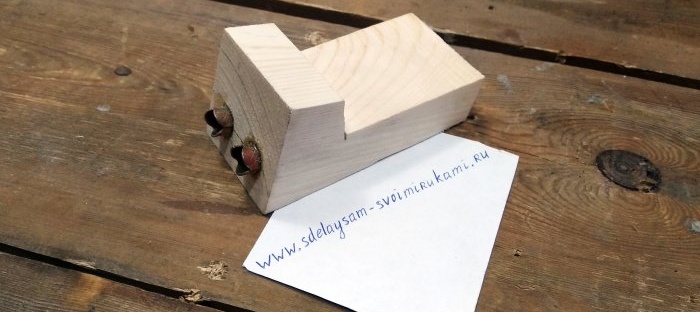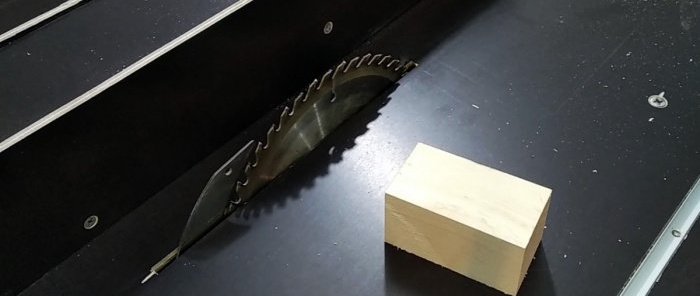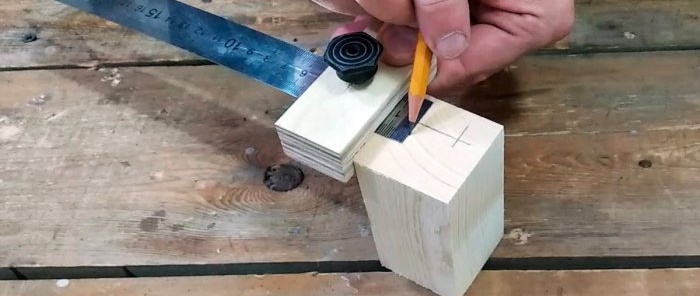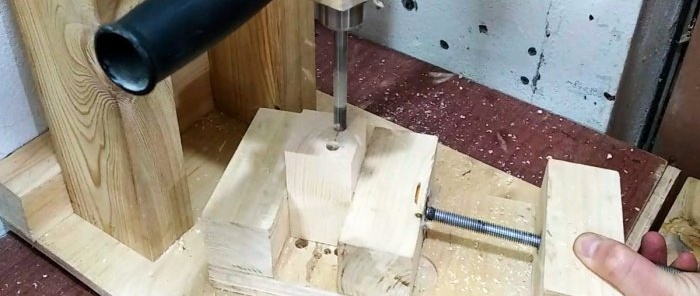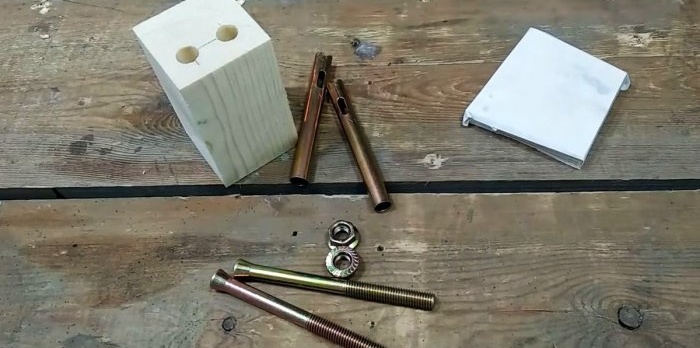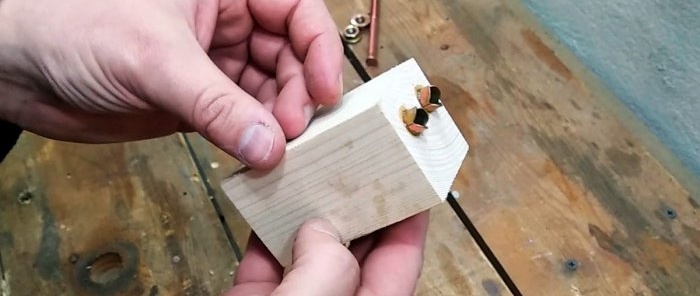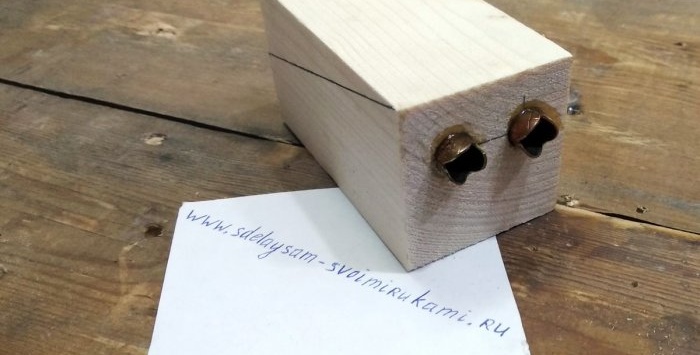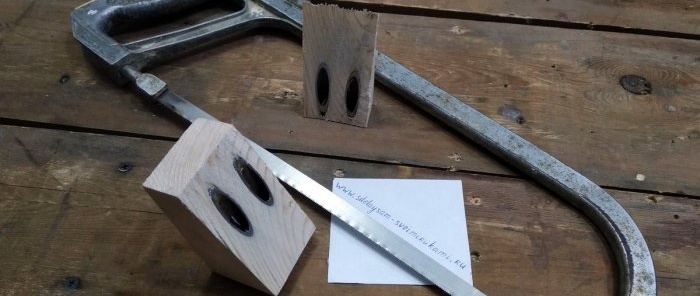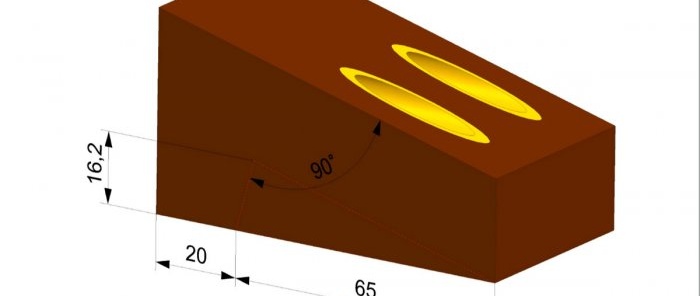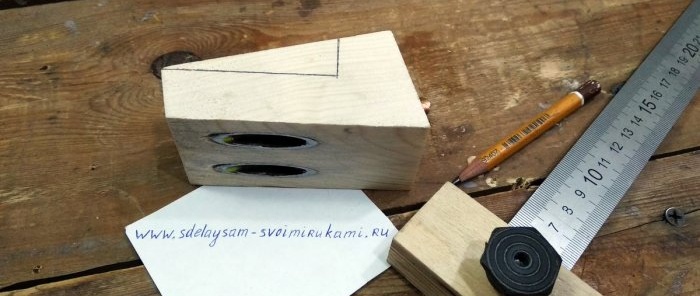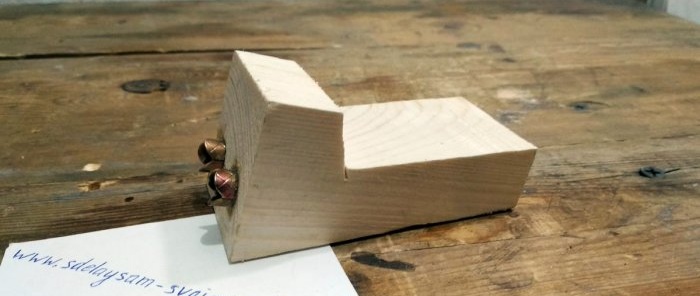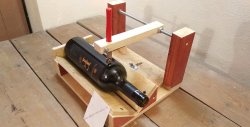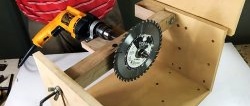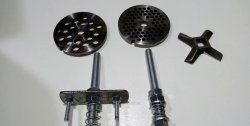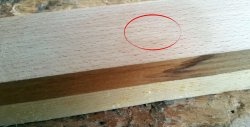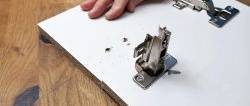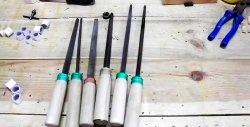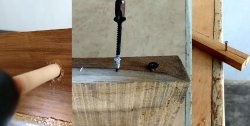Useful device of two anchor bolts
Today I will tell you how to make good use of the remaining fasteners, in this case they will be two anchor bolts with an M8x100 nut, which I had lying around idle.
You can see the finished device in the photo below:
So, let's start the manufacturing process. But first, I note that in addition to the above anchors, we will need a piece of 50x50 mm timber or any other piece of wood of a suitable size.
First you need to cut a piece of timber 85 mm long, cutting it to a section of 46x46 mm. It is better to do this on a circular or miter saw, but you can get by with a regular plane.
We mark two holes at the end of the workpiece at a distance of 15 mm from one edge and 13 mm from the other.
Use a 10mm drill to make through holes.
We disassemble the anchor bolts, leaving only the collet (spacer sleeve) - we do not need the remaining elements.
Using epoxy glue, we fix the sleeves in the holes of the wooden block, while it is better to leave the ends of the collets protruding 5 mm.
After the glue has dried on the side of the future crafts mark an oblique line at an angle of 15 degrees.If you made a wooden block strictly according to the previously given dimensions, then you can simply step back 23 mm from the edge to get the specified angle.
Using a hacksaw, cut into 2 parts along the marked line.
Again we mark the rectangle as in the presented sketch.
It should come out this way.
We cut off the excess using a hacksaw (preferably for wood, but you can also use a previously used hacksaw for metal). The result should look like the photo below.
All! The result is a jig analogous to the Kreg Jig, which is used to connect wooden parts with an oblique screw.
You can see how the parts are connected in the video:
In the same video you can see the second, more labor-intensive option for making a jig using an oblique screw, as well as a simple method for making a step drill from a regular metal drill.
The purchased analogue “Kreg Jig Mini” costs from 2000 rubles. Of course, the proprietary device will allow you to make holes more accurately and is equipped with a special step drill. But it seems to me that this is a worthy option to save money if you are not going to use this device in your professional activities. You can download homemade drawings Here.
You can see the finished device in the photo below:
Making a useful device
So, let's start the manufacturing process. But first, I note that in addition to the above anchors, we will need a piece of 50x50 mm timber or any other piece of wood of a suitable size.
First you need to cut a piece of timber 85 mm long, cutting it to a section of 46x46 mm. It is better to do this on a circular or miter saw, but you can get by with a regular plane.
We mark two holes at the end of the workpiece at a distance of 15 mm from one edge and 13 mm from the other.
Use a 10mm drill to make through holes.
We disassemble the anchor bolts, leaving only the collet (spacer sleeve) - we do not need the remaining elements.
Using epoxy glue, we fix the sleeves in the holes of the wooden block, while it is better to leave the ends of the collets protruding 5 mm.
After the glue has dried on the side of the future crafts mark an oblique line at an angle of 15 degrees.If you made a wooden block strictly according to the previously given dimensions, then you can simply step back 23 mm from the edge to get the specified angle.
Using a hacksaw, cut into 2 parts along the marked line.
Again we mark the rectangle as in the presented sketch.
It should come out this way.
We cut off the excess using a hacksaw (preferably for wood, but you can also use a previously used hacksaw for metal). The result should look like the photo below.
All! The result is a jig analogous to the Kreg Jig, which is used to connect wooden parts with an oblique screw.
Watch the video
You can see how the parts are connected in the video:
In the same video you can see the second, more labor-intensive option for making a jig using an oblique screw, as well as a simple method for making a step drill from a regular metal drill.
The purchased analogue “Kreg Jig Mini” costs from 2000 rubles. Of course, the proprietary device will allow you to make holes more accurately and is equipped with a special step drill. But it seems to me that this is a worthy option to save money if you are not going to use this device in your professional activities. You can download homemade drawings Here.
Similar master classes
Particularly interesting
Comments (0)


